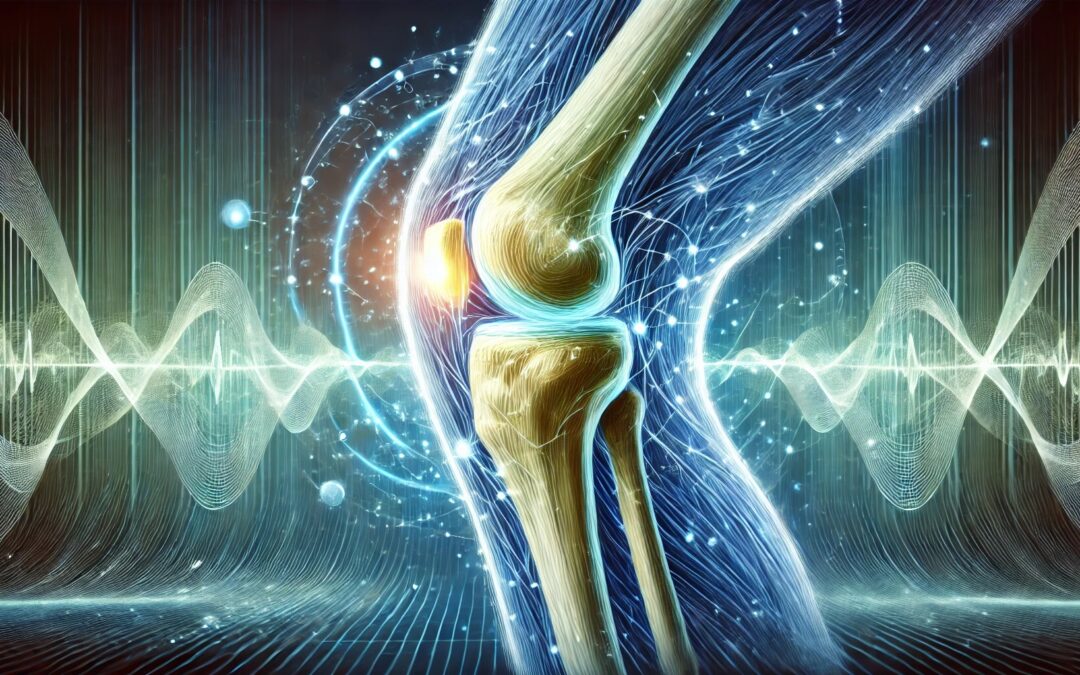Knee osteoarthritis, a degenerative condition affecting millions, often leads to chronic pain, inflammation, and reduced mobility. Research-backed non-invasive treatments like transcutaneous electrical nerve stimulation (TENS), whole-body vibration (WBV), and binaural beats show promise in managing knee pain, improving joint health, and even activating neuroreceptors for enhanced healing. Below, we delve into the therapeutic role of these frequency therapies and their impact on neuroreceptors, supported by studies available through PubMed and PMC. For a deeper exploration of frequency healing, visit pemfmagazine.com and pemfhealing.app.
Neuroreceptors: What They Are and Why They Matter
Neuroreceptors are specialized cells in the nervous system responsible for transmitting signals, enabling the brain and body to communicate effectively. They respond to specific chemical and electrical stimuli and play a crucial role in various physiological processes, including pain perception, mood regulation, and immune function. Healthy neuroreceptors are essential for efficient signal transmission, and damage to these cells can lead to chronic pain, inflammation, and other health issues.
In conditions like osteoarthritis, neuroreceptors in the knee and surrounding areas may become desensitized or dysfunctional due to ongoing inflammation. Frequency therapies, such as TENS, WBV, and binaural beats, can help rebuild and activate neuroreceptors, encouraging cellular regeneration and improved communication between the knee joint and central nervous system. This regeneration is vital for pain modulation, faster healing, and better overall joint health.
Research-Backed Insights on TENS, WBV, and Neuroreceptor Stimulation for Knee Osteoarthritis
- PubMed Study on TENS Effectiveness for Knee Osteoarthritis
This systematic review evaluates various TENS frequencies, revealing their effectiveness in pain relief and neuroreceptor activation. Frequencies like 2 Hz and 100 Hz demonstrate benefits in chronic pain reduction, while alternating between 2/100 Hz provides optimal modulation for neuroreceptor engagement, supporting knee pain management and mobility. - PMC Article on Whole-Body Vibration (WBV) Therapy in Knee Osteoarthritis
This study focuses on WBV at frequencies such as 15 Hz, 30 Hz, and 45 Hz, showing improvements in subchondral bone and cartilage. By stimulating the neuroreceptors in bone and cartilage, WBV helps improve resilience and reduce cartilage degradation in osteoarthritis. - PubMed Study on Optimal Stimulation Frequencies for TENS
This study compares the effects of TENS frequencies (e.g., 2 Hz, 80 Hz, and 2/100 Hz) on pain and neuroreceptor engagement. Findings highlight that low and alternating frequencies (e.g., 2/100 Hz) may optimize neuroreceptor responses, providing a more comprehensive pain-relief effect.
TENS and WBV Frequencies for Joint and Neuroreceptor Health
TENS Therapy Frequencies:
- 2 Hz: Encourages natural opioid release, reducing chronic pain and helping rebuild neuroreceptor sensitivity.
- 100 Hz: Provides rapid pain relief, activating neuroreceptors for immediate comfort.
- 2/100 Hz Alternating: Alternating between these frequencies offers sustained neuroreceptor activation and balanced pain modulation.
- 1 Hz to 130 Hz Range: This broader range can adapt to individual needs, addressing various pain points and activating neuroreceptors to improve knee functionality.
WBV Therapy Frequencies:
- 15 Hz: Supports neuroreceptor engagement in cartilage and subchondral bone, essential for joint stability.
- 30 Hz: Enhances cartilage and bone strength, stimulating neuroreceptors for stronger joint health.
- 45 Hz: Complements lower frequencies by providing additional structural support for the knee.
Binaural Beats: Mental and Physical Benefits for Neuroreceptors
Binaural beats use slightly different frequencies in each ear to create a third, entrained frequency, promoting relaxation and enhancing neuroreceptor function:
- Mental Relaxation: Binaural beats can alleviate anxiety and reduce pain-related stress, helping create an optimal healing environment for neuroreceptors.
- CIA and Cognitive Benefits: Binaural beats were researched by agencies like the CIA for their ability to enhance cognitive focus and promote relaxation. This entrained state can improve neuroreceptor sensitivity, allowing better brain-body communication and amplifying the effects of TENS and WBV on the knee joint.
- Pain Modulation: By promoting a deeply relaxed state, binaural beats support neuroreceptors in the knee, amplifying pain relief and potentially aiding in the regeneration of these critical cells.
Practical Application of Combined Therapies
Combining TENS, WBV, and binaural beats offers a powerful, layered approach to knee pain management, neuroreceptor activation, and overall joint health. Daily 35-minute sessions with these therapies, supported by grounding before and after, maximize therapeutic benefits and improve frequency absorption. Including these therapies as part of a broader management plan can significantly enhance outcomes.
To learn more about advanced PEMF-based therapy and frequency healing, explore pemfmagazine.com and pemfhealing.app, which provide detailed resources and customized options.

